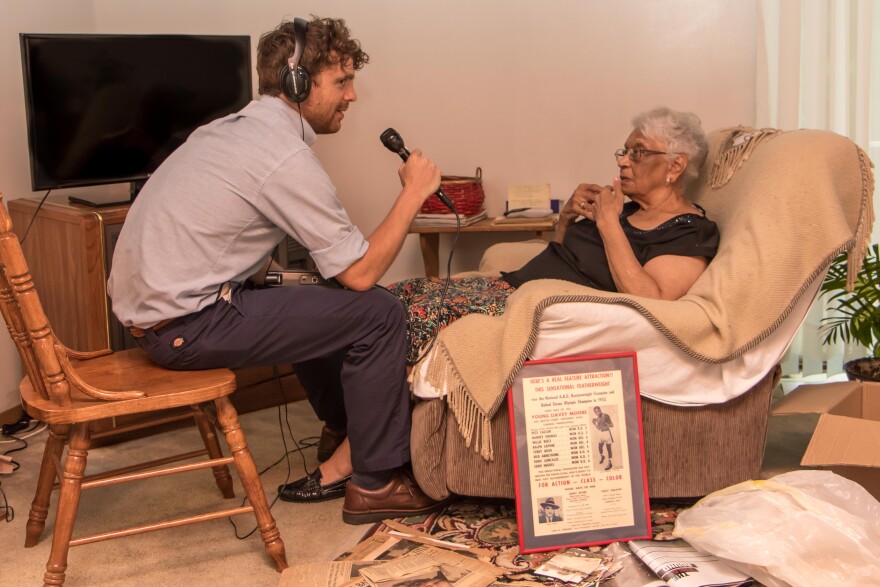In Springfield, Ohio, in a public green space just south of downtown, stands an 8-foot-tall bronze statue commemorating the life and death of a young boxer. His hands raised, ready to fight. He was once welcomed by throngs of cheering fans, and handed a key to the city.
In this town, he’s a hero. Community Voices Producer Leo DeLuca has a story about Davey “The Springfield Rifle” Moore.
20,000 people were there in March 1963, a national television audience watched at home, as world featherweight boxing champion Davey Moore defended his title against Sugar Ramos at the first and last fight ever held at the newly built Dodger Stadium in Los Angeles.
Davey, a member of the 1952 U.S. Olympic team, was considered by many to be the best pound-for-pound boxer of his time. While Davey was favored to win, Sugar Ramos eked ahead in the first nine rounds, and he was closing in on the title. Blood and sweat covered Davey’s face, his quick feet were slowed and sluggish as he entered the 10th round.
The final bell tolled. In the 10th round, Davey sustained a head injury more serious than anyone realized.
"And to think he took this beating. and fell back and hit his head, his neck back there, on the rope. And he said, ‘It was just not my night,'" his wife Geraldine recalls.
“It just wasn’t my night tonight,” Davey told the announcer in a post-fight interview. “It wasn’t my night. I could get him, maybe next fight. It’d probably be a much better one.”
Davey Moore gave that post-fight interview slouched over the top rope, a towel on his sagging head. Geraldine was later told that when he hit his head on the bottom rope, his brain stem had been severed. Swelling from the injury held it in place long enough to give the interview. Davey soon fell unconscious. He was rushed to nearby Loma Linda Hospital, where The Springfield Rifle died.

“We were at the hospital," says Geraldine. "And they gave us a room there. And then they came, they woke me up, and told me that he was gone."
In spite of boxing’s extreme popularity, its brutality caused controversy. Davey Moore’s death caused public outcries from many, including a 21-year-old songwriter named Bob Dylan whose song "Who Killed Davey Moore" became a staple of his live set.
Even though the father of her five children was dead, Geraldine held her husband’s death against no one. Not even Ultiminio “Sugar” Ramos, the wiry Cuban boxer who threw the fatal blow.
“He cried. He really cried. He cried hard. And he was very sorry that that had happened. But it wasn’t his fault. So, I never held it against him," she says. “No one killed Davey Moore. He died doing what he loved to do. He was a boxer. And he loved that. Who killed Davey Moore? He just died. I mean, it was an accident. And God took him on home. And that’s all I can say.”
Leo DeLuca is graduate of WYSO's 2017 Community Voices class. To learn more about Community Voices training, visit: http://wyso.org/community-voices

